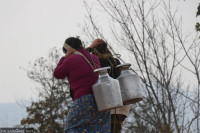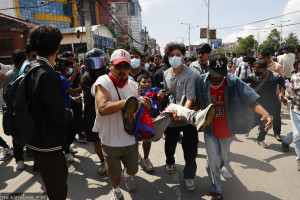Editorial
Streamlining critical care
Local hospitals across the country should be enabled to provide accessible dialysis services.
The world observed World Kidney Day on March 11, with this year’s theme being ‘Living well with kidney disease’. Prime Minister KP Sharma Oli, while attending a programme to observe the occasion in Kathmandu last week, announced that specialist renal services would be established to ensure optimum management and treatment of kidney diseases, although he failed to furnish details on how and when the said services would be made available.
The prime minister is himself a chronic kidney disease survivor, having undergone two successful transplants. In that sense, he is a living example of the fact that renal failure is not the end of life, and that living well with impaired kidney function is possible if patients have access to quality critical health care. However, the prime minister’s grandstanding falls flat when, in reality, patients requiring regular dialysis services continue to suffer as hospitals either turn them away or charge them exorbitantly.
While officials at the Ministry of Health and Population claim institutions receiving money from the government to provide dialysis services have failed to provide optimum services and have been charging patients illegally, representatives of the institutions claim the government has failed to reimburse them in time, resulting in their services being affected. Meanwhile, chronic kidney patients who require uninterrupted dialysis services continue to become a casualty.
The fault lines of Nepal’s flawed approach to the treatment of kidney diseases came to light most glaringly during the Covid-19 pandemic when those requiring regular dialysis services were turned away by the dialysis centres. Even those institutions that continued to provide dialysis services reportedly reduced the duration of the sessions which affected the quality of care provided to the patients. That is as inhuman as it gets. Almost 6,000 Nepalis undergo dialysis services at different facilities across the country at the moment, and patients suffering from end-stage renal disease cannot wait for the government and the institutions to resolve the conflict, as it is a question of life and death—quite literally.
To be fair to the government, it has acknowledged the challenge of chronic kidney disease in Nepal, which is why it has made dialysis services free for all. Apart from major hospitals providing regular dialysis services, the government has signed agreements with over 50 hospitals, nursing homes and dialysis centres across the country to provide the facility. For each dialysis session, the government provides Rs2,500 to dialysis centres run by non-governmental organisations.
The government also provides financial assistance for kidney transplantation and medication of chronic kidney disease. Of the total Rs2 billion spent on the treatment of eight serious ailments, a whopping 52 percent goes towards kidney disease management and treatment. However, patients undergoing dialysis at several hospitals and dialysis centres say they are being charged up to Rs3,500 for the services.
The government and other stakeholders cannot continue to exhibit a lackadaisical attitude in their responses to critical care illnesses. It must work towards enabling local hospitals to provide dialysis services so that patients do not have to take long journeys to the facilities clustered in urban areas. Its focus must be to make dialysis services accessible even to the most underprivileged sections of the population. It must also continue to set up several state-of-the-art institutions across the country for the management and treatment of renal ailments as for all other kinds of intensive care.




 21.12°C Kathmandu
21.12°C Kathmandu














